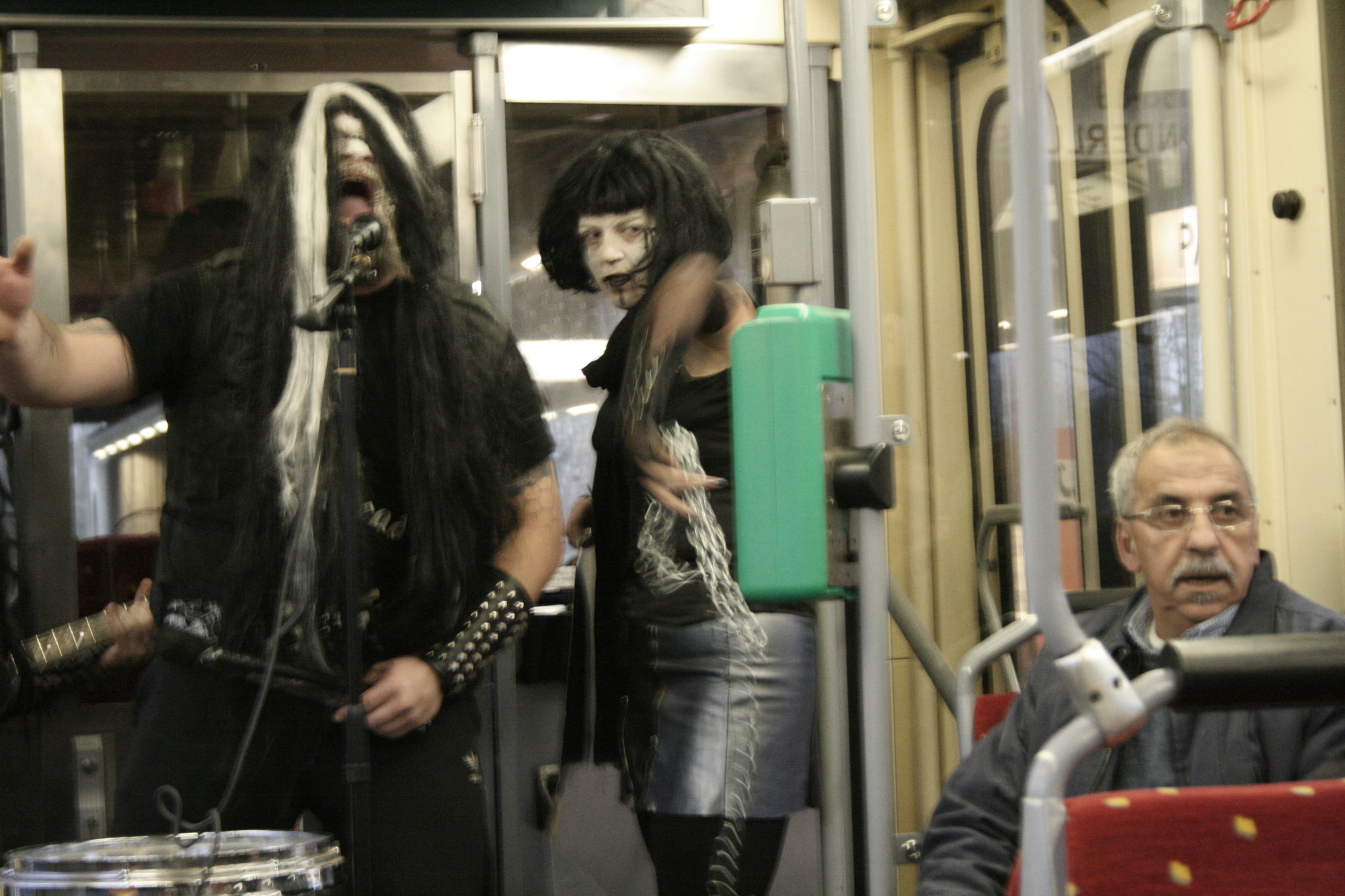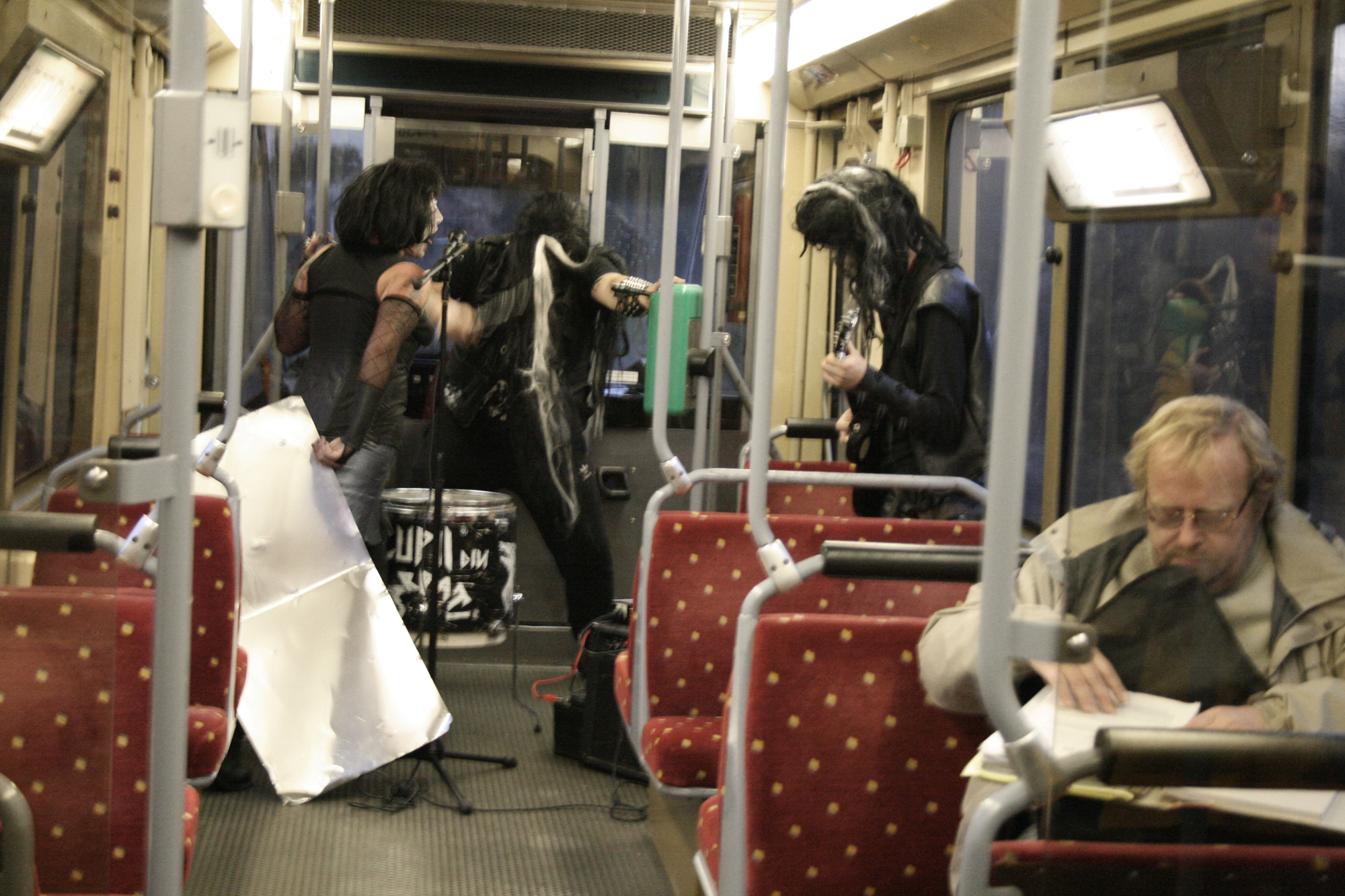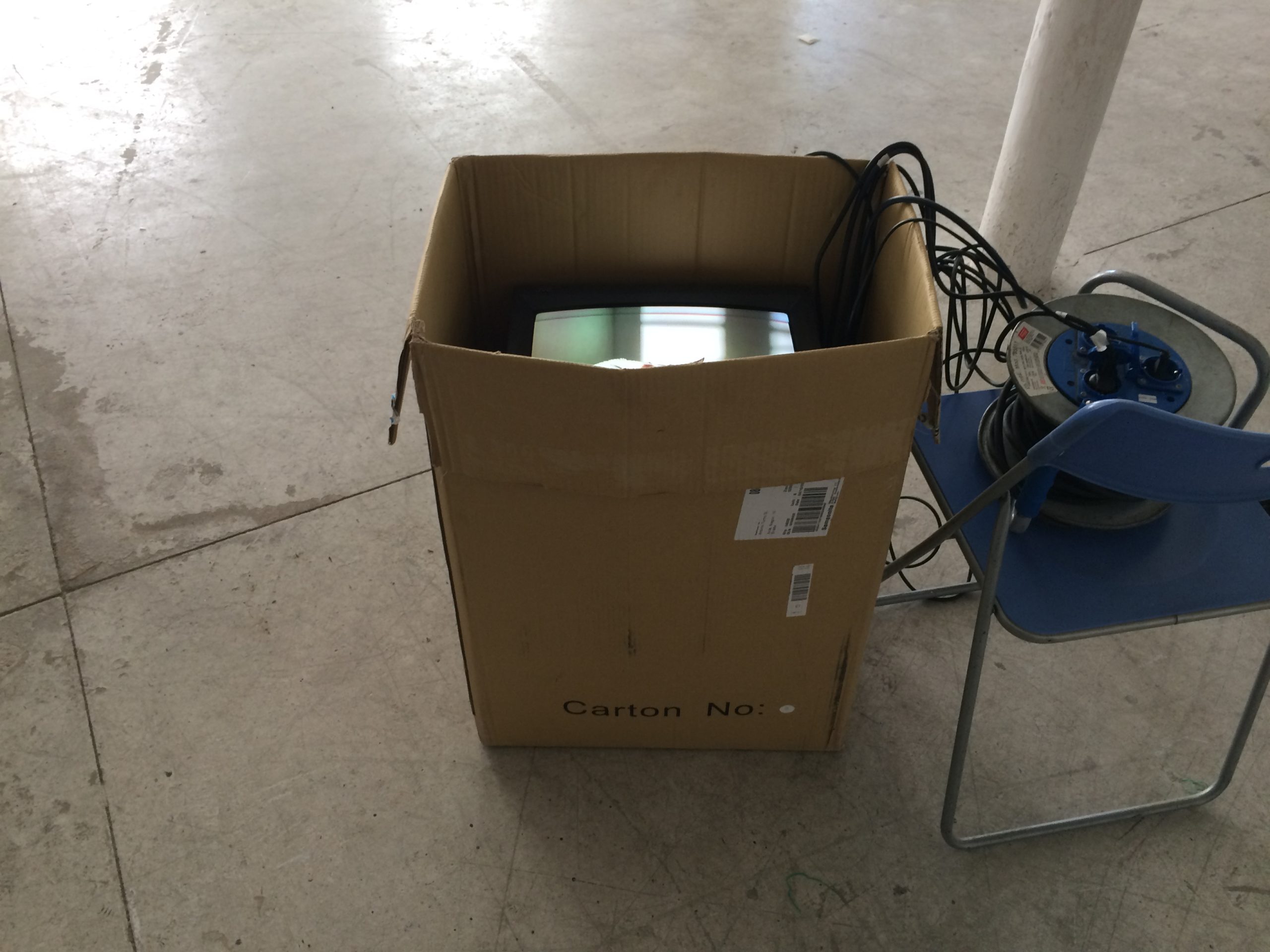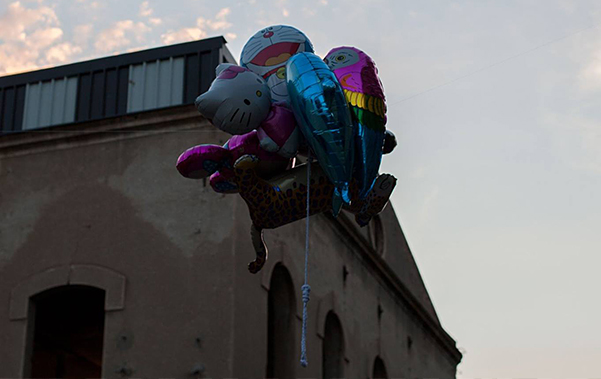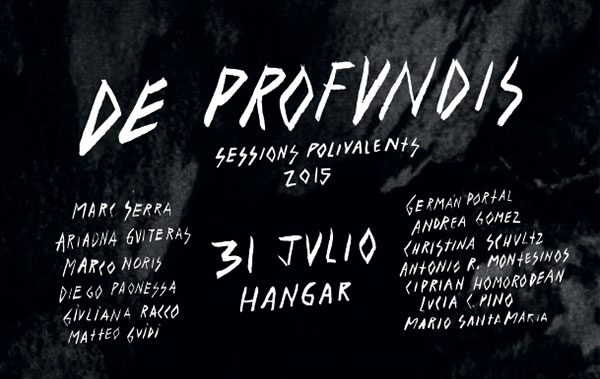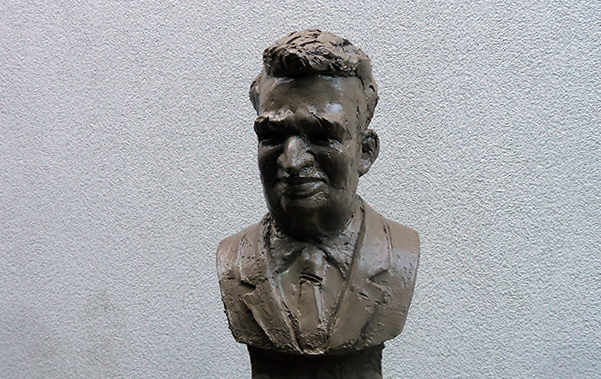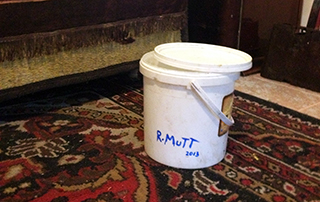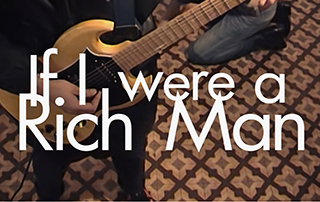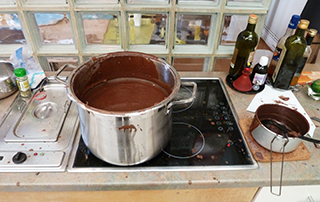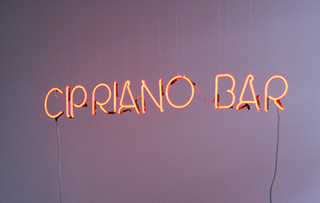“Lupii din Carpati was originally presented in Charleroi. The city is famous as the former capital of a Belgian region known as “Black Country” because of its important role in the mining and metallurgy industry. Over the last decades, abandoned factories and growing unemployment rates have come to dominate the landscape, plunging the city into severe economic hardship. Under these circumstances, staging a ‘death metal’ concert appears as a clear, albeit gloomy, allusion to the downfall of the factories and the end of the dreams they once beckoned. Upon closer look, however, this oblique metonymy is only used as a sort of teaser, a fast gateway opening into a multifaceted view of larger realities.A second layer of the work sets the stage for the demolition of stereotypes, conflating the figure of the Eastern European street musician and that of the Occidental subway singer, while at the same time turning upside-down the image of the public entertainer. Throughout the trip, all the way to the end station, the improvised death metal band interprets a highly personal version of the ballad of Miorita. Respectively from Romania, Serbia, and Croatia, the musicians combine growls with frantic drum and guitar.Heavily clad, loud and wild, they invade the public space, taking the place of less intrusive performers to which Charleroi commuters are accustomed and leading us to wonder who the wolves are, and who the lamb. For, while their presence strongly upsets the distinction between distraction and disruption, the expected tension will never come.
Unaware participants brought into the artist’s plot, the Charleroi commuters are caught in a double bind. Confronted with the unexpected, most will feign indifference, some will nervously laugh. No matter how, they will still follow their habitual route. What is at stake from this perspective is the border that separates the private and the public, a frontier built through social agreement and conventions that, as we are shown, will stand even when it is forcefully brought down. While the band bellows the story of the three shepherds, a new ballad comes to life, one about contemporary urban experience where the individual and the collective are sometimes forced into a common path.”
